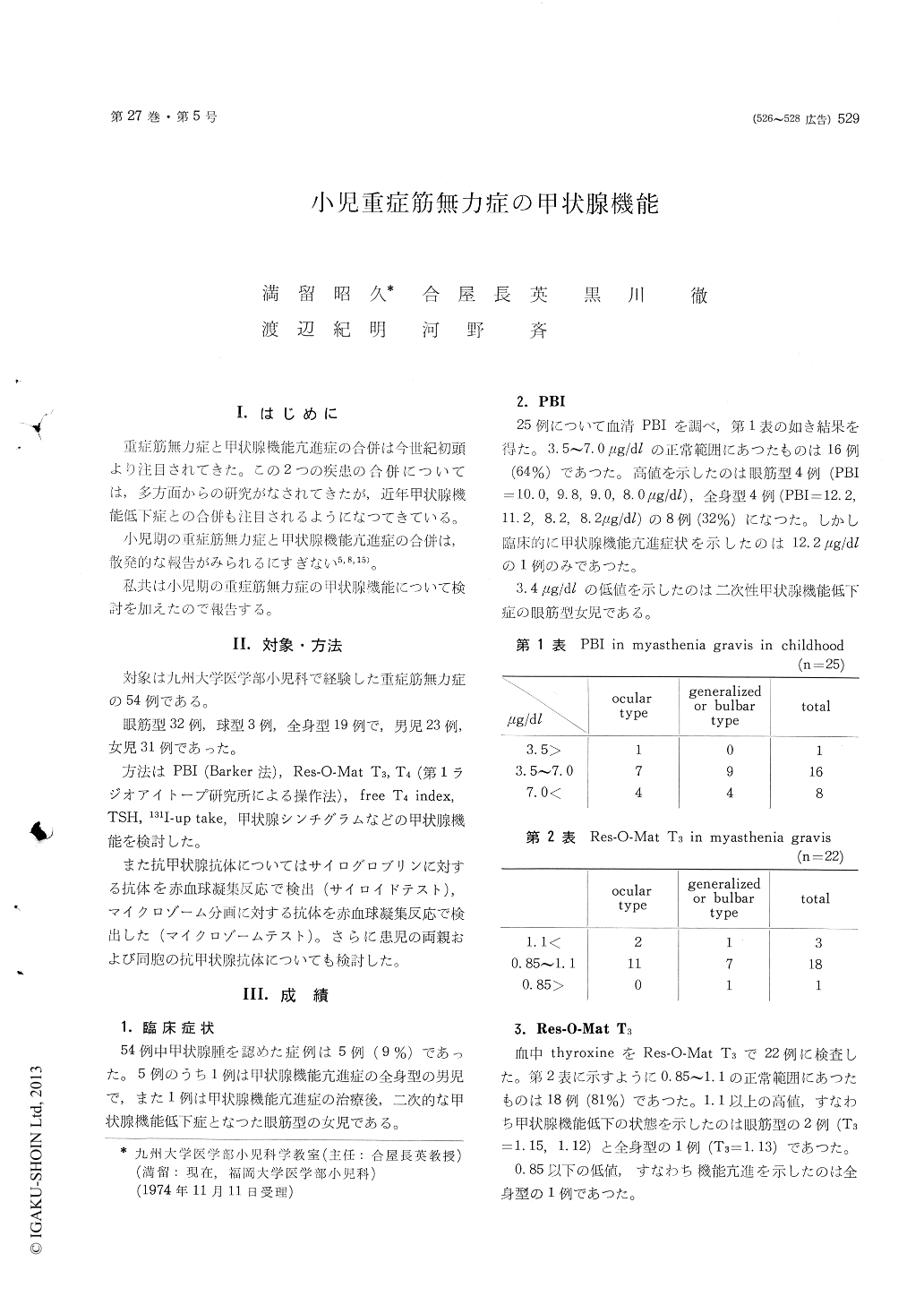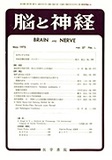Japanese
English
- 有料閲覧
- Abstract 文献概要
- 1ページ目 Look Inside
I.はじめに
重症筋無力症と甲状腺機能亢進症の合併は今世紀初頭より注目されてきた。この2つの疾患の合併については,多方面からの研究がなされてきたが,近年甲状腺機能低下症との合併も注目されるようになつてきている。
小児期の重症筋無力症と甲状腺機能亢進症の合併は,散発的な報告がみられるにすぎない5,8,15)。
私共は小児期の重症筋無力症の甲状腺機能について検討を加えたので報告する。
Thyroid function was studied in 54 cases withmyasthenia gravis in children and 43 persons oftheir parents and siblings.
Goiter was found in 5 (9%) of 54 cases withmyasthenia gravis.
Two cases had hyperthyroidism, and one of themturned to have hypothyroidism after the treatmentfor hyperthyroidism.
PBI level in serum was more than 8.0 μg/dl in8 cases (32%), and less than 3.5 μg/dl in one case.
Res-O-Mat T3 was abnormally high with morethan 1.1 in 3 cases (14%), and abnormally lowwith less than 0.85 in one case. Res-O-Mat T4was more than 14.0 μg/dl in three cases (14%), andless than 4.0 μg/dl in other 3 cases.
Positive thyroid test was noted in 10% of 28patients, and microsome test was positive in 15%of 26 patients.
Nine patients in our series were noticed to havegoiter or abnormal thyroid functions.
In the 6 family members of 51 families thyroiddisorders were noticed. And thyroid test was posi-tive in 20%, and positive microsome test wasnoticed in 40% of 25 mothers of the patients. Butin none of their fathers and siblings thyroid testor microsome test was positive.

Copyright © 1975, Igaku-Shoin Ltd. All rights reserved.


